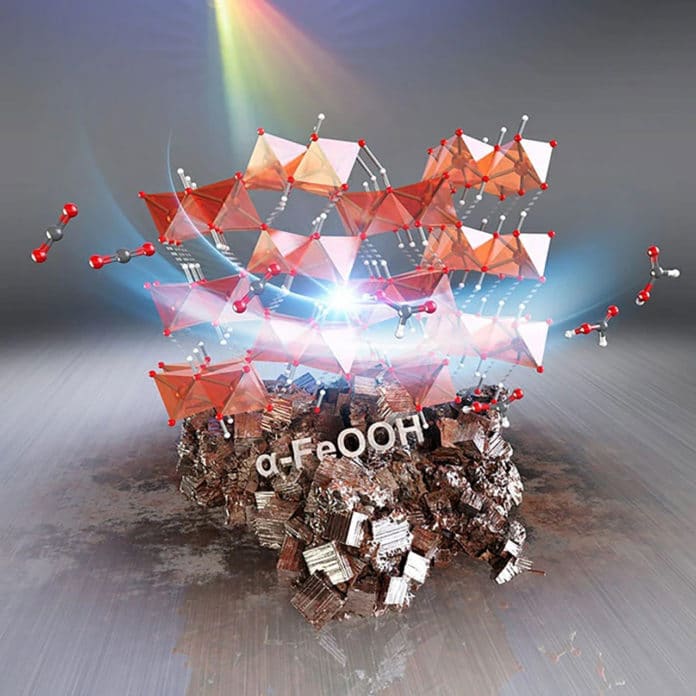In recent years, CO2 emissions arising from the consumption of fossil fuels have become a severe problem. Among various proposed methods and schemes to address this problem, photocatalytic CO2 reduction is expected to be a key technology in the future.
Photocatalytic conversion of CO2 into transportable fuels such as formic acid (HCOOH) is an attractive solution. To aid in this mission, a research team from Tokyo Tech developed a catalyst that can efficiently convert CO2 into HCOOH with ~90% selectivity! It is a first-of-its-kind-of iron-based solid catalyst that can generate HCOOH when accompanied by an effective photosensitizer.
Solid catalysts are considered best for this task because of their efficiency and potential recyclability. Over the years, scientists have explored the catalytic abilities of many cobalt, manganese, nickel, and iron-based metal-organic frameworks (MOFs). However, most iron-based catalysts reported thus far only yield carbon monoxide as the main product instead of HCOOH.
Scientists from the Tokyo Institute of Technology have solved this problem by presenting alumina (Al2O3)-supported, an iron-based catalyst that uses alpha-iron(III) oxyhydroxide (α-FeOOH; goethite). The new α-FeOOH/Al2O3 catalyst showed superior CO2 to HCOOH conversion properties alongside excellent recyclability.
Prof. Kazuhiko Maeda, the study’s lead author, said, “We wanted to explore more abundant elements as catalysts in a CO2 photoreduction system. We need a solid catalyst that is active, recyclable, non-toxic, and inexpensive, which is why we chose a widespread soil mineral-like goethite for our experiments.”
To synthesize their catalyst, scientists used the iron-loaded Al2O3 material for photocatalytic reduction of CO2 at room temperature in the presence of a ruthenium-based (Ru) photosensitizer, an electron donor, and visible light of wavelength over 400 nanometers. Their system showed 80-90% selectivity towards the main product, HCOOH, and a quantum yield of 4.3%.
Prof. Maeda said, “The insights from this research could aid in developing new catalysts—free of precious metals—for the photoreduction of CO2 into other useful chemicals. Our study shows that the road to a greener energy economy doesn’t have to be complicated. Great results can be attained even by adopting simple catalyst preparation methods. Well-known, earth-abundant compounds can be used as selective catalysts for CO2 reduction if they are supported by compounds like alumina.”
Journal Reference:
- Daehyeon An, Dr. Shunta Nishioka, et al. Alumina-Supported Alpha-Iron(III) Oxyhydroxide as a Recyclable Solid Catalyst for CO2 Photoreduction under Visible Light. DOI: 10.1002/anie.202204948
